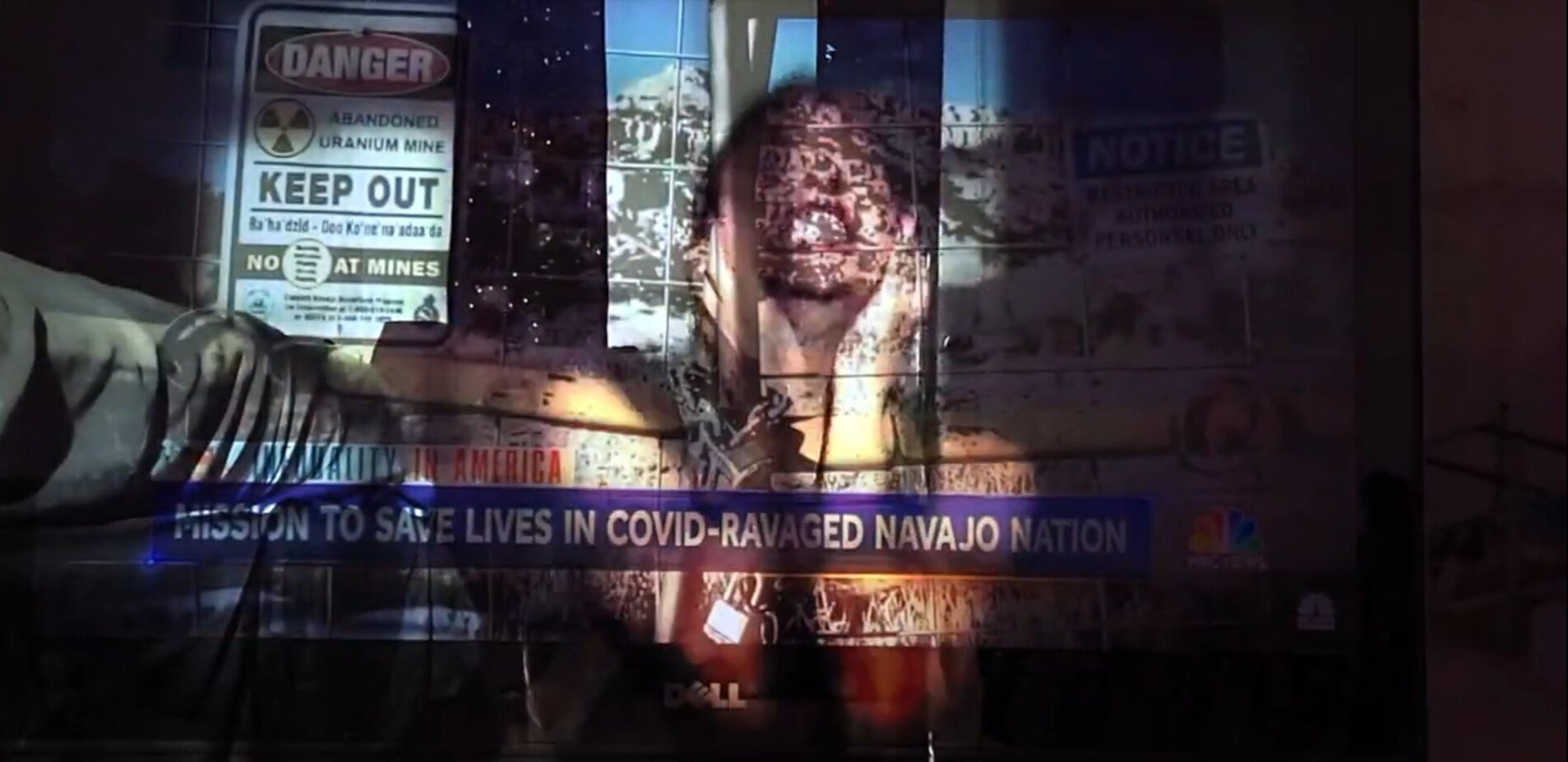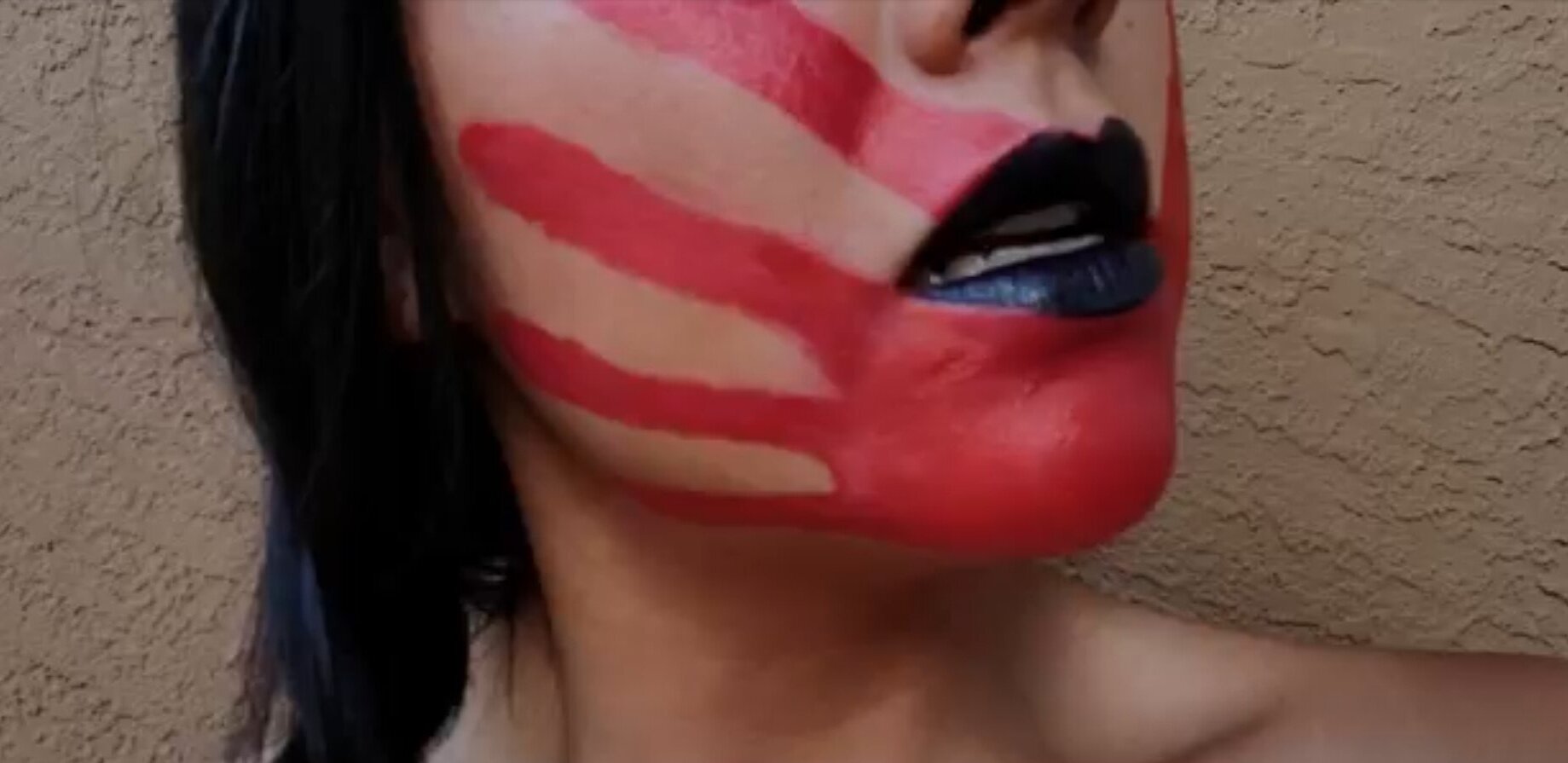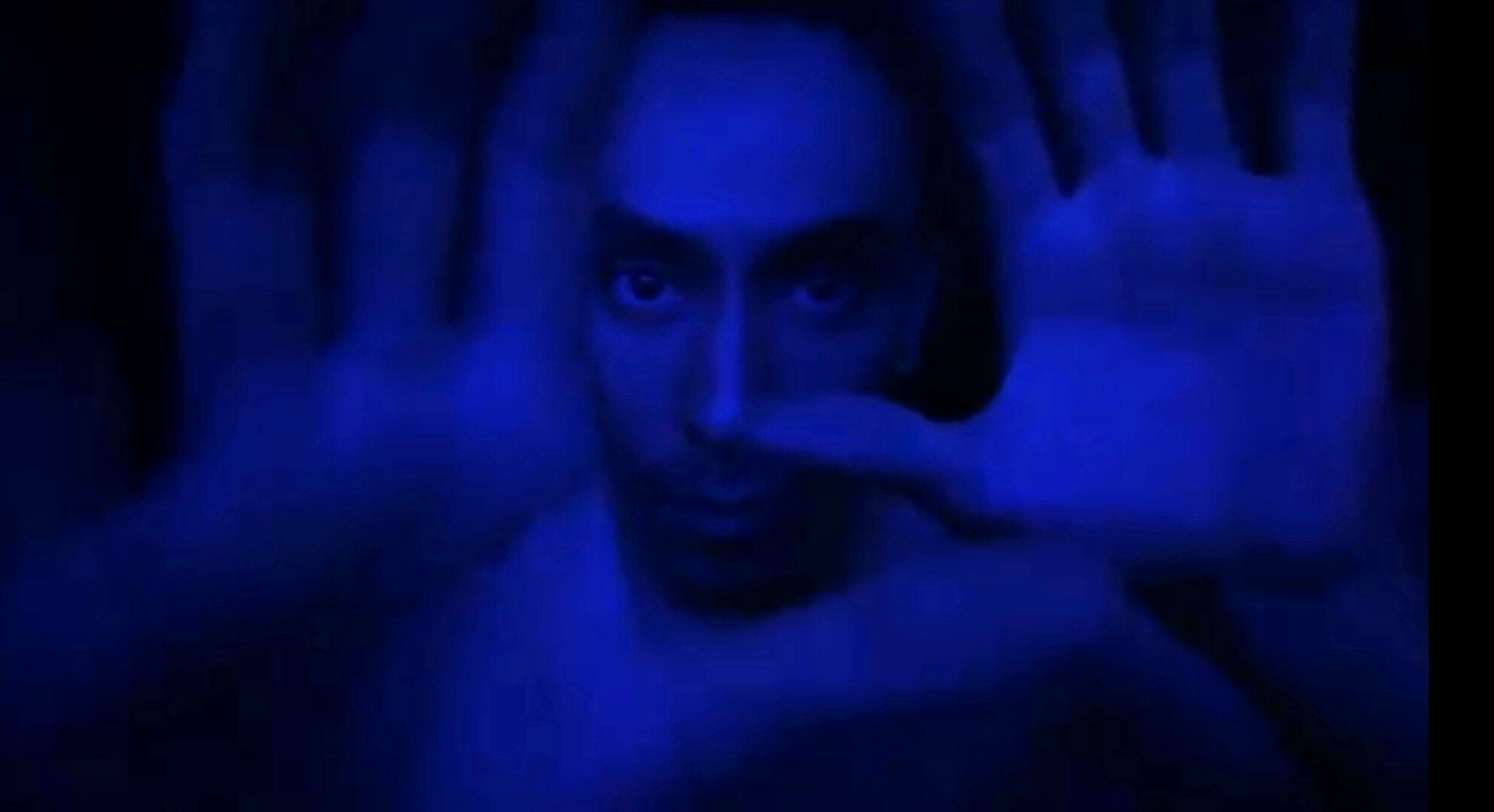On Friday, November 20, UtahPresents premiered the final episode of a six-part series of Dancing Earth’s Between Underground and Skyworld Cyberspace. The event was live streamed for ticket holders to view from home. Following the screening of the last episode was a Q&A with a panel of interdisciplinary artists involved in the project. The night concluded with a performance by Randy L. Barton, a Neo-Contemporary Navajo artist who played a stellar DJ set with his own traditionally inspired Indigenous hip-hop tracks.
Dancing Earth’s Between Underground and Skyworld Cyberspace merges the talents of a breadth of collaborators working in diverse mediums including dance, sound, audiovisual, and virtual design. The six episodes constitute a multidimensional Indigenous-made work of digital art with a critical message. Despite all the added barriers faced by Indigenous artists in the age of COVID-19, Between Underground and Skyworld Cyberspace will endure as a reminder of Indigenous peoples’ unrelenting resilience and capacity to adapt in the face of extreme adversity.
All photos, courtesy of Dancing Earth, by Paulo J. da Rocha-Tavares
The dancers in Dancing Earth engage in and communicate profound meaning through embodied performance. In many Indigenous cultures, one's actions on the earth act as offerings back to the land and its life-sustaining resources. It is commonly held within Indigenous thought that our actions are recorded and felt by the earth. Indigenous peoples have always danced as a means of passing on stories, making offerings to the earth, and honoring all relations. Dancing Earth engages in their performances with this conviction as the foundation.
A phrase invoked commonly within Indigenous communities is “all my relations”. The expression is offered to honor all of one’s relationships with the earth. These may be relationships to surrounding natural environments, or the relationships amongst communities of people. There’s a certain level of balance that is required to cultivate the most ideal relationships. By maintaining good relations, one will find balance and live sustainably.
This fairly simple premise of maintaining good relationships with all of one's surroundings is a guiding principle within an Indigenous worldview. Despite the simplicity of this ideology, Indigenous peoples have struggled to maintain these good relations. This struggle is steeped in centuries of fighting colonial oppression imposed by settling nations. In the United States, Indigenous peoples and the lifeways necessary to their wellbeing, and quite frankly, their existence, have been under attack since the inception of European settlement in the Americas.
Natalie Aceves, photo by Paulo T.
“It has been a rough 500 years” heaves dancer Justin Gieham in the third episode of Dancing Earth’s Between Underground and Skyworld Cyberspace, “From Resilience Blues to Journeys”. This lamentation is made with a deep exhale as the other dancers gather around to convene about how they will survive the apocalypse of settler colonialism. The group decides to look towards the wisdom of their ancestors to lead them forward and venture on a journey to seek this knowledge.
The indigenous peoples of the Americas experienced an apocalyptic invasion by settlers. This invasion continues to disrupt the prosperity of Indigenous peoples, which is reliant on sustainable balance to exist between all of life on earth. A balanced relationship to the earth and land is the essence of Indigenous life and culture. The prolonged loss of land and culture brought on by settler colonialism is a violent assault on Indigenous peoples. Modern generations are still surviving through the apocalypse that began centuries ago with initial settlement. As lands and lifeways continue to be occupied and threatened, indigenous peoples are forced to remain in a state of survival and mourning.
Natalie Benally, photo by Paulo T.
In their essay, “Decolonization is not a Metaphor,” Indigenous scholars Eve Tuck and K. Wayne Yang define settler colonialism as being “a structure and not an event”. Tuck and Yang write:
In the process of settler colonialism, land is remade into property and human relationships to land are restricted to the relationship of the owner to his property. Epistemological, ontological, and cosmological relationships to land are interred, indeed made pre-modern and backward. Made savage.
Settler colonialism threatens the life-sustaining relationships Indigenous peoples have maintained to land for centuries.
Dancing Earth pushes against the oppressive forces of settler-colonialism and imagines an Indigenous future by re-engaging traditional knowledge and understandings. Each of the dancers maintains their unique relationships to indigeneity stemming from their diverse Indigenous backgrounds. For the dancers of Dancing Earth, dancing is a modality of reconnecting to the sacred and embodying traditional ancestral knowledge.
In an interview with members of Dancing Earth facilitated by UtahPresents and Dr. Elizabeth Archuleta of the Ethnic Studies department at the University of Utah, the dancers spoke to how Dancing Earth provides a platform for embodied healing, decolonizing, and reconnecting to Indigenous knowledge and traditions. Company-member Lumhe Micco Sampson (Mvskoke/ Seneca), a multidisciplinary artist and traditional hoop dancer, related how the company connects back to traditional Indigenous ways of life through dance. These traditional lifeways Sampson explained are not just “myths” or “legends” but are in fact “proven ways of life that have been going on for thousands of years”. Sampson continued:
So what we’re doing with this modern time with dance is telling a story and creating energy. Often, that energy is very healing. The individual doing the dancing, but also anybody watching can obtain healing as well. Our movements are influenced by our everyday lives, which help put those movements into action and for us to be able to teach them to coming generations so that they will be able to connect to the movements and the teachings and pass them forward.
Quetzal Guerrero, violinist, visual artist, actor, and dancer within the cohort of artists interviewed described his collaboration with Dancing Earth as a means of connecting with his Indigenous heritage. Guerrero offered that:
Being involved with DE has been a huge opportunity for me to start to reinvent or manifest the narrative I see for myself as a living and breathing Indigenous person of this current era. I don’t have the wealth of knowledge to pull from language and ceremonies that so many Indigenous peoples have. I’ve had to make a concerted effort to discover that for myself and what works for me and how I can express it through art, and how I can inspire others to do the same.
By connecting to ancestral knowledge through dreams and elders, and embodying this knowledge, Dancing Earth breaks barriers built by settler colonialism. As a result, dancers and audience members are afforded the opportunity to reconcile with loss and move towards a decolonized future, wherein Indigenous peoples and their principles are centered and honored.
Raven Bright, photo by Paulo T.
Scholar Tria Blu Wakpa observes the members of Dancing Earth as “culture creators” who are “drawing on past and working forcefully and gently with their materials in the present, evoking understandings for the survival and humanity of Native and non-Native peoples and the wellbeing of the planet.” Inspired by the knowledge that has sustained Indigenous peoples across time from all over the world, Dancing Earth is paving the way for Indigenous futurism and the healing of all life on earth.
Dancing Earth’s multifaceted work, Between Underground and Skyworld Cyberspace, offers a platform for a decolonized, Indigenous-centered perspective to infiltrate the world of concert dance and dance film. Most significant of all is the company’s aptitude for invoking a revitalization of Indigenous knowledge and healing across Indigenous communities.
The digitalized nature of Dancing Earth’s presence within the Salt Lake community has allowed the company to reach a broad audience. As a part of their residency with UtahPresents, Dancing Earth generously hosted virtual classes with different local organizations including, the Urban Indian Center in Salt Lake City. Connecting with and giving back to local Indigenous communities is a priority Dancing Earth upholds wherever they are on tour.
Indigenous art such as that created in collaboration by the artists of Dancing Earth is deeply embedded with meaning. Creating art informed by traditional ways of knowing and beliefs that have survived centuries of forced oppression and erasure is an act of decolonization. By embodying cultural principles and traditional knowledge, Dancing Earth resists colonial subjugation and conceives a future for Indigenous peoples wherein our/their cultures and traditions are no longer oppressed, but rather embraced and enacted as a means of survival and resistance.
Dancing Earth’s performance was lived-streamed upon occupied Shoshone, Paiute, Goshute, Ute lands known as Salt Lake City, Utah.
Raised in Southern California, Talia Dixon moved to Salt Lake City in 2017 to study dance at the University of Utah. She plans to graduate with her Honors BFA in Modern Dance as well as a Minor in American Indian Studies in the Spring of 2021. As an enrolled member of the Pauma Band of Luiseño Mission Indians, Talia is passionate about involving her community in her academic and artistic pursuits.





